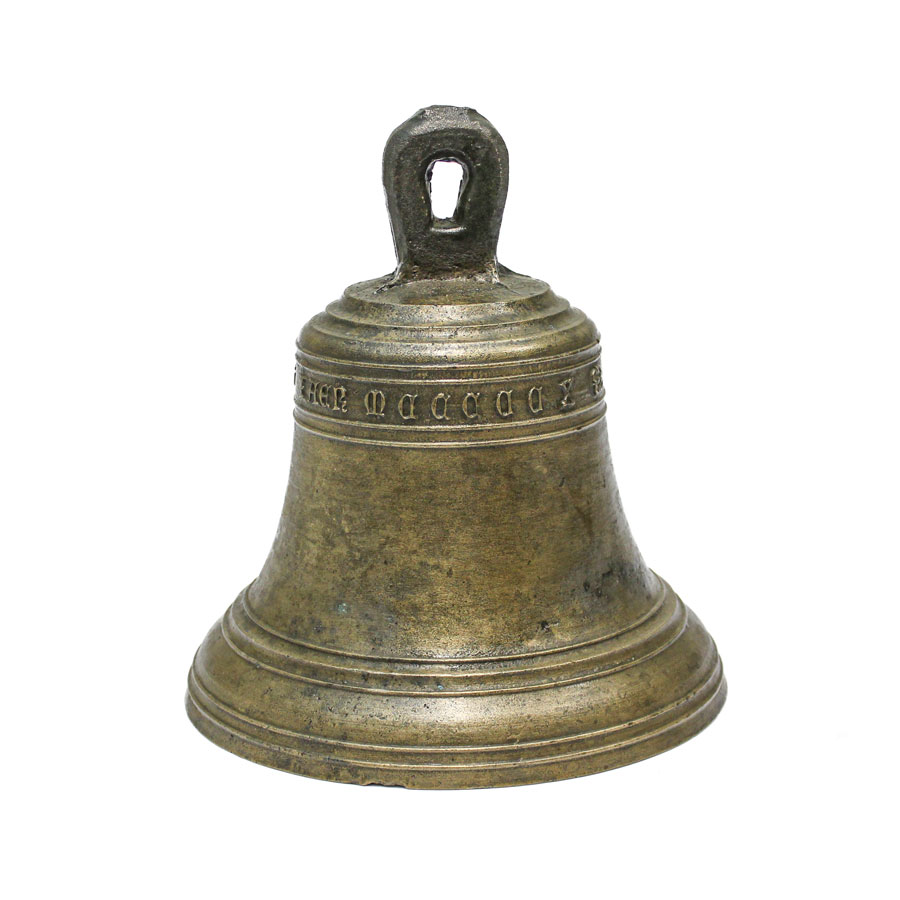The bell recovered from the Mary Rose was one of the last items to be recovered from the wreck site, as it was found under the ship below the starboard side.
The bell was cast in bronze and metallurgy results showed it was made from copper (82%), tin (15%) and lead (1.7%). The bell is believed to have been cast in Flanders, and the Flemish inscription on the bell reads
IC BEN GHEGOTEN INT YAER MCCCCCX
which translates as
I was made in the year 1510
This is the same year that the Mary Rose was commissioned, on 29th January 1510. The bell was, therefore, a part of her story from the beginning until the day the ship sank on 19th July 1545.
On board ships, the bell was used to signal the time, to mark the change of the watch and as a warning, particularly to other ships in fog.
Telling the time
A ship’s bell was an essential device that all the men onboard would have been familiar with. It was the means of marking time and regulating shift patterns, with an ‘eight-bell’ watch sounding constantly throughout the day and night.
Each half hour was marked by an additional chime of the bell up to the ‘eight-bell’ chime on the standard four-hour watch, as below, when the new shift started and the pattern repeated:
| Number of chimes/’bells’ | Pattern | Timing of 4-hour shift/’watch’ |
| 1 | X | 1/2 hour |
| 2 | XX | 1 hour |
| 3 | XX X | 1 1/2 hour |
| 4 | XX XX | 2 hours |
| 5 | XX XX X | 2 1/2 hours |
| 6 | XX XX XX | 3 hours |
| 7 | XX XX XX X | 3 1/2 hours |
| 8 | XX XX XX XX | 4 hours |
The half-hour system is based on the use of sand-glass timers that measured in half-hour increments. Evidence of four sandglasses was recovered from the Mary Rose.
Two of these were found on the upper deck near to where the bell was originally positioned. Another was within a chest on the main deck outside the carpenters’ cabin and is the most well preserved.
